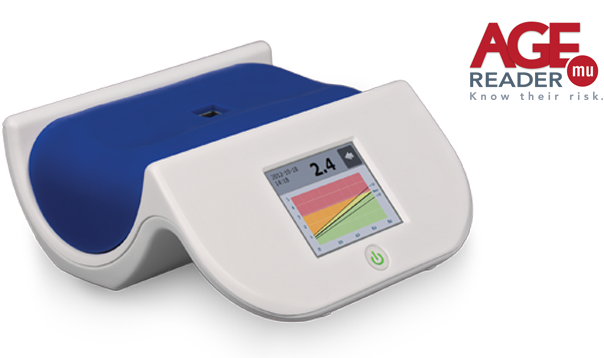Cardiovascular risk in atherosclerosis
Patients with peripheral artery disease (PAD) experience widespread atherosclerosis. This leads to a severely increased risk for cardiovascular events and increased mortality. PAD patients have increased risk for the development of myocardial infarction, strokes and have much higher all-cause mortality rates.
It is crucial to measure the personal cardiovascular risk of each PAD patient to determine who is at highest risk of developing cardiovascular events. There are several treatment option available if an increased cardiovascular risk is detected in an early phase of the disease.
Many clinical studies have shown the added value of using the AGE Reader as a non-invasive marker of increased risk in patients with cardiovascular disease.
Clinical research on the AGE Reader in cardiovascular risk consequently led to the following findings:
- Skin auto fluorescence predicts amputations in patients with peripheral artery disease (PAD).
- Skin auto fluorescence predicts mortality and coronary events in patients with peripheral artery disease.
Would you like to learn more about our products? Request any information you wish to receive here.

Read more » Read more »
More information about Diagnoptics.
Information on Diagnoptics' products and Advanced Glycation Endproducts.
Information about Advanced Glycation Endproducts, the AGE measurement and clinical validation.
